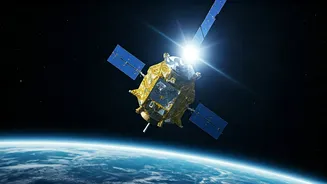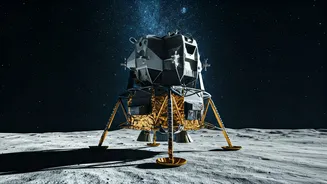Chandrayaan-4: The Goal
The primary objective of Chandrayaan-4 is to retrieve lunar samples, a feat that would establish India as a major player in space exploration. The mission,
slated for 2028, represents a bold step towards gaining critical insights into the Moon's composition and history. By bringing back lunar samples, Indian scientists will have the opportunity to conduct extensive research, gaining valuable data and furthering our understanding of the solar system. The mission is viewed as a direct challenge to the US and China in the ongoing space race. The success of Chandrayaan-4 will not only boost India's prestige in the global space community but also contribute to future space exploration endeavors, potentially paving the way for manned missions to the Moon and beyond.
Mission Details Unveiled
Chandrayaan-4 is designed to collect and return samples, with the specific details of the mission carefully planned. While specific technical details are still evolving, the mission will utilize advanced technologies developed within India's space program. The plan involves a carefully orchestrated series of launches, orbital maneuvers, and robotic operations to ensure the safe collection and return of lunar materials. The mission's success relies on the precision of the launch vehicles, the robustness of the spacecraft, and the advanced capabilities of the sample retrieval systems. The mission's success would also showcase India's engineering prowess. This ambitious undertaking signifies India's commitment to pushing the boundaries of space exploration and its determination to compete with the leading spacefaring nations.
Impact on Research
The samples brought back by Chandrayaan-4 are expected to revolutionize lunar science. Studying these materials will enable scientists to understand the Moon's geological composition, its formation, and its evolution. Researchers can analyze the samples using advanced techniques to determine the age of various lunar features, identify the presence of valuable resources, and uncover clues about the Moon's past environment. This research has the potential to rewrite textbooks, providing new insights into the solar system and our planet's place within it. The mission will also spark innovation in various fields such as materials science, robotics, and advanced computing. The collected data will contribute to a more profound comprehension of the universe, enriching scientific knowledge across the globe and benefiting numerous research initiatives.
India's Space Ambitions
Chandrayaan-4 is a critical milestone in India's broader space program, which reflects the nation's ambitious goals. The mission represents India's dedication to becoming a leader in space exploration, mirroring the nation's efforts to enhance its technological capabilities and establish a solid presence in the international arena. The success of Chandrayaan-4 will open doors to more complex missions, including potential crewed lunar missions and deep-space expeditions. It reinforces India's capability to design, build, and operate advanced spacecraft and also strengthens domestic industries. The project is anticipated to inspire the next generation of scientists and engineers, motivating innovation and propelling India's space program to new heights. India's commitment will solidify its role as a key contributor to the global space exploration efforts.














